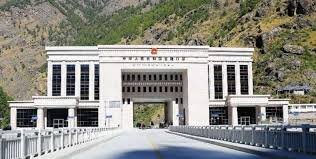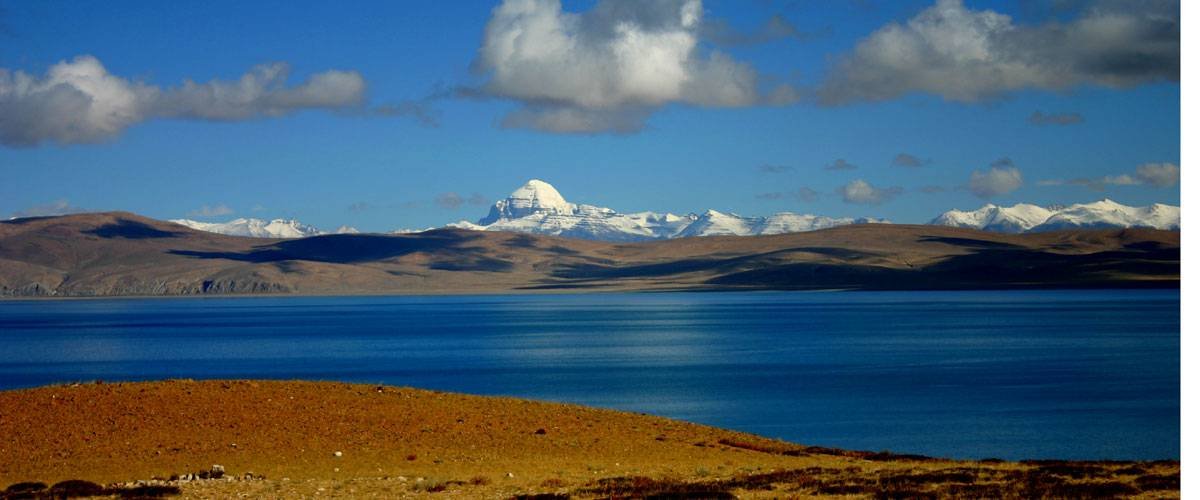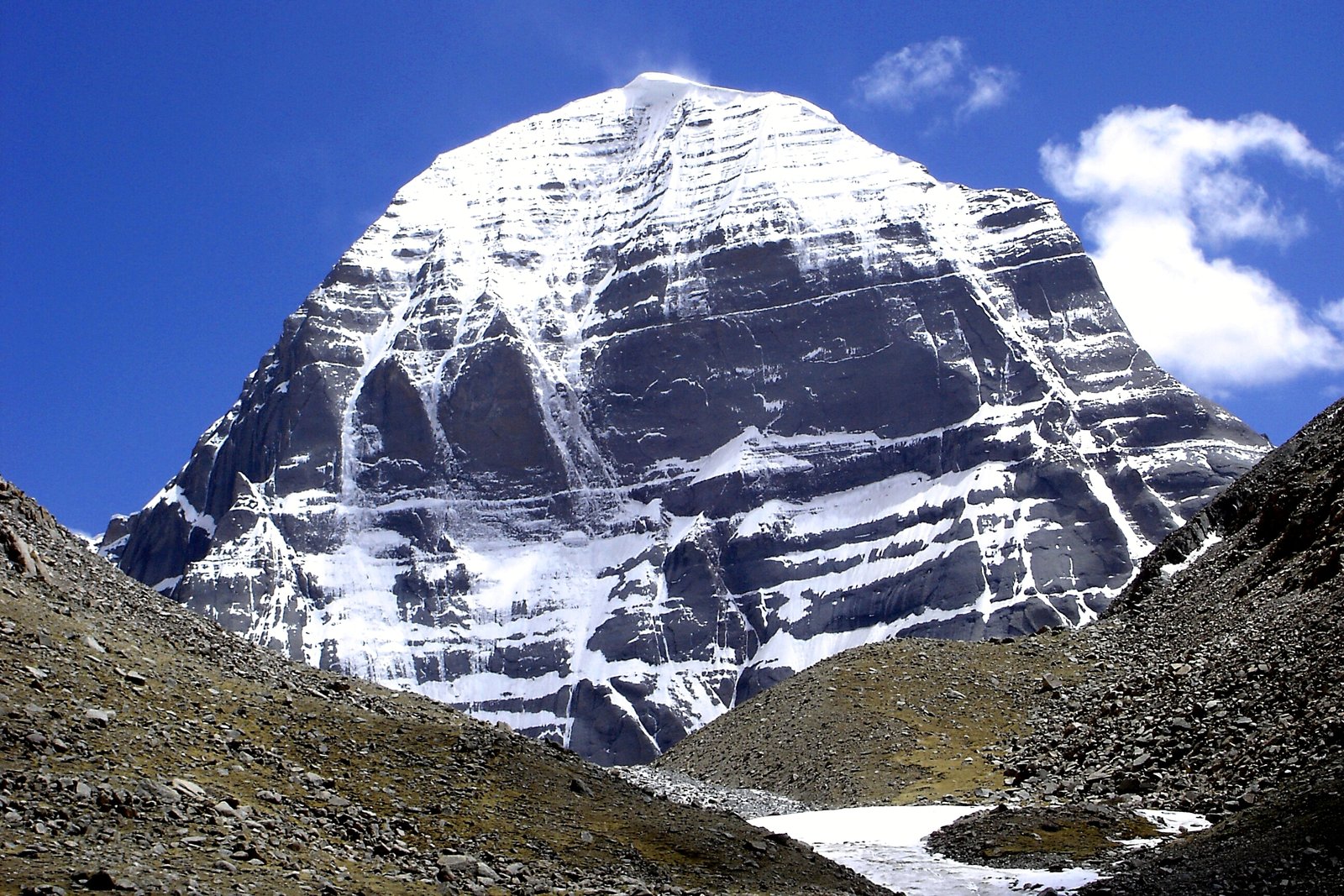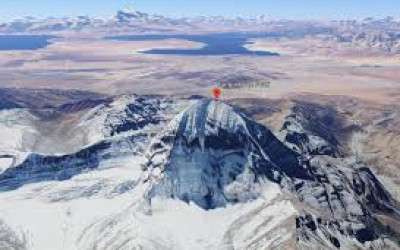- Registered Company
- More than Decade of Experience
- Customer Satisfaction is our motto
Trip Facts
-
Group Size1- 15 pax
-
Max ElevationDirapuk 4900 m
-
GradeModerate
-
TransportationJeep/ Hike
-
AccommodationHotel and Teahouse
-
Cost2100
-
Trip Length10 Days
-
Best MonthSpring and Autumn
-
WIFIAvailable
-
Trip ModeNormal
-
MealBreakfast, Lunch, Dinner
-
Trekking StyleHiking
-
Start FromKathmandu
-
End PointKathmandu
Outline Itinerary
Day 01: Drive: Kathmandu (1400m) - Kerung Border(2850 m)
Day 02: Free Day at Kerung (2850m)
Day 03: Drive from Kerung County (2850m) to Saga (4550m)
Day 04: Drive from Saga (4550m) to Mansarovar Lake (4600m)
Day 05: Drive from Mansarovar Lake (4550m) to Darchen (4650m)
Day 06: Darchen (4650m) Trek to Dirapuk (4860m)
Day 07: Trek from Dirapuk (4860m) to Zuthulphuk (4670m)
Day 08: Drive from Zuthulphuk (4670m) back to Saga (4550m)
Day 09: Drive from Saga to Kerung County (2850 m)
Day 10: Drive from Kerung County (2850m) back to Kathmandu (1400m)
Altitude Map
This Altitude Map shows highest alttitude you will trek to each day.
Group Cost
| Group | Cost |
|---|---|
| 2-4 pax | $2100 |
| 1-1 pax | $2400 |
| 5-10 pax | $1900 |
| 11-15 pax | $1800 |
Package Included
- Accommodation: Guest houses, lodges
- Meals: breakfast, lunch, dinner
- Transportation: Kathmandu and local transfers accordingly.
- Permits: Tibet Travel Permit, Alien's Travel Permit.
- Guides and Support Staff Basic Medic-Kit.
- Cultural Visit entry fees for various sites.
Package not Includes
- International Flights: to and from Nepal.
- Visa Fees: Chinese Visa or Group Visa to Tibet.
- Personal Expenses: Snacks, Drinks, Souvenirs, Laundry, etc.
- Travel Insurance: Medical Emergency, Cancellation of Trip, etc.
- Other Activities: Any other optional excursions that may be undertaken.
- Tips for Guides and Support Staff.
- Emergency evacuation cost (medical emergencies including evacuation)
Trip Overview
The Kailash Mansarovar Pilgrimage Tour is a trail of emotional and spiritual significance to people worldwide. Mount Kailash Yatra encompasses two major religious sites: Mount Kailash and Mansarovar Lake. At 6,638 meters above sea level, Mt. Kailash is considered one of the most religiously revered mountains for Hindus, Buddhists, Jains, and Bon followers.
Mount Kailash Yatra is regarded as the earthly manifestation of Mount Meru, the middle of the universe, according to Hindu cosmology. The pilgrims believe rounding this holy mountain washes their sins and brings them closer to enlightenment.
Mansarovar Lake stands tall at an altitude of 4,588 meters with crystal clear water. It is believed that one dip in this lake washes off all evil from the soul. The serene environment around the lake, surrounded by snow-capped peaks, offers a perfect setting for reflection and meditation.
The Mount Kailash Yatra is physically demanding, especially during the Kailash Parikrama, which is roughly a 52-kilometer-long route. It usually takes three days to walk and includes crossing over the Dolma La Pass at an altitude of 5,630 meters. The landscape can be pretty challenging, but the physical and spiritual payoff is well worth it.
En route, the visitors stop at important monasteries, including Dirapuk and Zuthulpuk, to rest and attend to their spiritual matters. Other landmark locations along the route include Gauri Kund, which is considered the source of the Indus River.
Kathmandu is the starting point for one's journey, where pilgrims prepare for it. From Kathmandu, one journeys into Tibet, crossing the border via Kerung. Throughout the way, the scenery is breathtakingly beautiful. It is a pleasing scenic view and allows one to intermingle and share spiritual experiences with fellow pilgrims.
Mount Kailash Yatra is a physical journey to spiritual awakening and self-discovery. For many pilgrims, it is the experience of their lives in which they connect with something greater than themselves.
Kailash Mansarovar Trip: Spiritual Significance
Kailash Mansarovar Yatra is a prestigious pilgrimage that is highly spiritually important for followers of Hinduism, Buddhism, Jainism, and Bon. The centre of this tour is Mount Kailash, Lord Shiva's earthly abode. This mountain signifies divine presence and meditation for Hindus, while Buddhists consider it a cosmic centre representing ultimate happiness.
The mountain is also identified with several deities and spiritual figures in various religions, which, to some extent, has made it a focal point of diverse spiritual practices.
Not far behind in importance is Mansarovar Lake, lying at the foot of Mount Kailash. It is said to personify purity and calmness, and the waters of this lake are believed to be sacred, washing away sins and delivering one toward spiritual salvation.
Thus, ritual baths in this lake are common among pilgrims seeking blessings and purification. Immersion in its waters is believed to wash away the tribulations of previous life and achieve a higher state of consciousness.
The most central ritual of the Yatra is the Kora, the circumambulation of Mount Kailash. This trek around the mountain is a physical challenge and a metaphoric spiritual journey during which the pilgrims reflect upon life and seek forgiveness for their sins.
Highlights of 10 Days Mount Kailash Mansarovar Tour - 2025/2026
- Mount Kailash is considered a holy place for Hinduism, Buddhism, Jainism, and Bon. It is also considered Lord Shiva's abode.
- Mansarovar Lake is considered a source of purification and spiritual cleansing, and people take ritual baths there.
- This is an important pilgrimage around Mount Kailash, 52 kilometres long.
- The trek's highest point, 5,630 m, offers breathtaking views and a considerable spiritual experience.
- The richness of the culture can be gauged through the local monasteries, traditional rituals, and interaction with the local communities.
- Part of the trek coincides with the Saga Dawa Festival, one of the most important Tibetan festivals, which boosts the spiritual atmosphere.
- The journey offers fantastic landscapes with snowy mountains, crystal-clear lakes, and broad planes.
- An added advantage of the journey is that the trekkers might glimpse some unique wild animals of the region.
(YOU MUST REACH 4 OFFICIAL DAYS BEFORE TO KATHMANDU FOR THIS TRIPS )
Detail Itinerary
Drive: Kathmandu (1400m) - Kerung Border(2850 m)
-
Altitude: Dhunche - 2030 m, Syabrubesi - 1600 m, Timure - 1983 m
-
Distance: Dhunche- 127 km, Syabrubesi- 141 km, Timure -152 km
-
Driving Hours: 1 hr. (from Rasuwagadhi to Kerung)
You will be driven out of Kathmandu early in the morning of day one. It is 127 kilometers from Dhunche and takes six hours by car. During the drive, you will notice the city giving way to the countryside. Beautiful valleys and hills follow endlessly. You will go through insignificant villages and farmlands with attached terraces. Higher into the mountains, the view starts to change.
Drive to reach Kerung County, which is 2850 meters above sea level. After driving for around 45 minutes, you will reach Rasuwagadhi, merely 15 kilometres from Syabrubesi. If you start from Timure, you must walk 10 to 15 minutes to reach the Rasuwagadhi border.
Here, you fulfil the immigration and customs formalities of both Nepal and Tibet. This is an important and necessary process to ensure a smooth passage into Tibet.
After clearing customs, you drive to Kerung County, about 40 kilometres away, taking about an hour. The drive up to Kerung is marked by magnificent views of the mountains and uncommon Tibetan landscapes.
Breakfast, Lunch, Dinner
Teahouse
2850m

Free Day at Kerung (2850m)
-
Altitude: Kerung (2850m)
A free day at Kerung County during your Kailash Mansarovar journey is the appropriate time for acclimatization and rest at a higher altitude before starting the further journey of pilgrimage.
The day can be utilized in sightseeing its surroundings, a small but important town near the Nepal-Tibet border. You can have short walks around, feel the serenity, and enjoy towering views of the surrounding mountains.
Some tourists utilize this time to interact with the locals, study their culture, or visit local markets to peek at Tibetan life. This is a very important rest to get your body acclimatized to the elevation, and it will go a long way in smoothing the journey of pilgrimage ahead.
Breakfast, Lunch, Dinner
Teahouse
2850m

Drive from Kerung County (2850m) to Saga (4550m)
-
Altitude: Saga (4550m)
-
Total Distance: 220 km
-
Driving Hours: 5-6 hrs
Day three starts with an early breakfast in Kerung and proceeds to Saga, at an altitude of 4550 meters. The distance covered would be approximately 220 kilometres in about 5 to 6 hours of driving. The road to Saga would be amazingly scenic, with vast landscapes, rolling hills, and, here and there, nomadic herders taking care of their yaks.
Generally, the height will be followed by continuous travelling upwards, so it is better to monitor health and acclimatization. Arrive at Saga, where you will be accommodated in a hotel providing breakfast, lunch, and dinner. Saga is an important stopover place for travellers to Mount Kailash and Lake Manasarovar.
The town acts as a Centre for trekkers and pilgrims; one often shares tales of adventure with co-travellers. The day is best utilized in acclimatization for the strenuous activities ahead in the next few days.
Breakfast, Lunch, Dinner
Teahouse
4550m

Drive from Saga (4550m) to Mansarovar Lake (4600m)
-
Altitude: Mansarovar Lake (4550m)
-
Total Distance: 450 km
-
Driving Hours: 6-7 hrs
-
Parikrama Distance: 90 km (by vehicle)
Early in the morning on the fourth day, after having breakfast, you will proceed for a drive towards Mansarovar Lake, holy and at an elevation of 4600 meters. The distance will be about 450 kilometres, taking six to seven hours. Scenic landscapes, with expansive plains, snow-capped mountains, and the serene beauty of the Tibetan plateau, are indeed a visual feast.
Upon arrival at Mansarovar Lake, you can fill with spiritual water and take the Parikrama of the lake, which is about 90 km and takes 3 hours by vehicle.
Many travellers will find this a profoundly spiritual experience, as Mansarovar Lake is considered one of the most holy lakes in Hinduism and Buddhism. After a long day of travel, you will check into a lakeside lodge, where you can take in the serenity around you and reflect upon what this sacred site means to you.
Breakfast, Lunch, Dinner
Teahouse
4600m

Drive from Mansarovar Lake (4550m) to Darchen (4650m)
- Altitude: Darchen (4650m)
-
Distance: 35 km
-
Driving Hours: 1 hr
-
Puja Duration: Most of the day
Day five is a spiritual day at Mansarovar Lake. In fact, most of the time after breakfast will be spent doing pujas on the lake since, for many, this forms part of the essential pilgrimage.
The lake's serene surroundings and spiritual significance create an ideal atmosphere for reflection and prayer. Afternoon: Drive to Darchen, which is 4650 meters above sea level, about 35 kilometres a distance that would typically take an hour to drive. Darchen forms the base for the Kora of Mount Kailash.
Upon arrival, you will overnight at a dormitory-sharing guest house. This day will allow you to get accustomed to the region's spiritual presence and prepare you for the physical demands of Kora in the days to come.
Breakfast, Lunch, Dinner
Teahouse
4650m

Darchen (4650m) Trek to Dirapuk (4860m)
-
Altitude: 4860m at Dirapuk
-
Total Distance: 12 km
-
Trekking Hours: 5-6 hrs
Outer Kora starts on the sixth day. After breakfast in Darchen, in the morning, take some time by car to reach Tarboche, where you start the Kora with a visit to Yama Dwar.
From here, you will trek to Dirapuk, which is situated at an altitude of 4860 meters. The trek is around 12 kilometres and takes 5 to 6 hours. On the way, you will enjoy spectacular vistas of the North face of Mount Kailash, a view that almost all tourists consider to be incomparable. The trail can be difficult with various topography, so it is essential to take your time and stay hydrated.
At Dirapuk, you will have dinner and overnight at a mud house en route, or you can return to the dormitory guesthouse in Darchen, as you choose.
Breakfast, Lunch, Dinner
Teahouse
4860m

Trek from Dirapuk (4860m) to Zuthulphuk (4670m)
-
Altitude: Zuthulphuk (4670m)
-
Total Distance: 22 km
-
Trekking Hours: 8-9 hrs
On day seven, you start the continuity from Dirapuk to Zuthulphuk by going up to Dolma La Pass, the highest point of Kora at 5700 meters. It is a 22 km trek, taking upwards of 8 or 9 hours; thus, it is the most challenging day in your journey.
We leave early, like 7:00 AM, to complete our trek and see the vistas. The trek also starts with steep climbs, which require physical stamina; however, the views from above compensate for the climb. Reaching the pass, the route goes down to Gaurikund and then moves along the riverbank for some time to reach Zuthulphuk.
Arrive at a lodge in Zuthulphuk and have dinner. This is quite an important day to be tested on physical challenges and the spiritual feel of Kora. Meals: Breakfast, Packed lunch during the trek, Dinner, and a Stay at a lodge.
Breakfast, Lunch, Dinner
Teahouse
4670m

Drive from Zuthulphuk (4670m) back to Saga (4550m)
-
Altitude: Saga (4550m)
-
Total Distance: 470 km
-
Driving Hours: 7-8 hrs
-
Trek Distance: 8 km (2-3 hrs)
The eighth day starts with a mere trekking of about 8 Km, taking approximately 2-3 hours, where your coach will be waiting. After the trek, drive back to Darchen, where other members of your group will be waiting for you who did not do Kora.
It is a drive of about 470 kilometres from Darchen to Saga, which will take about 7 to 8 hours. While you drive back towards Saga, you can reminisce about all that happened during the Kora. The scenery is amazing, allowing you one more look at the magnificent mountains and quiet plains of Tibet.
You arrive in Saga and check into a hotel for meals and rest to recover from the physical exhaustion of the previous days of trekking.
Breakfast, Lunch, Dinner
Teahouse
4550m
Drive from Saga to Kerung County (2850 m)
-
Altitude: Kerung 2850m
-
Total Distance: 220 km
-
Driving Hours: 5 to 6 hrs
On this day, you start returning by driving back towards Kerung County, covering a distance of around 220 kilometers, which takes approximately 5-6 hours. During this return journey, you cross partly familiar landscapes. Reflect on the journey covered so far. You will arrive in Kerung County at an altitude of 2850 meters and check into your guesthouse for a night.
Breakfast, Lunch, Dinner
Teahouse
2850m
Drive from Kerung County (2850m) back to Kathmandu (1400m)
-
Altitude: Kathmandu (1400m)
-
Distance: 152 km
-
Drive: 7-8 hrs
On the last day of the tour, after some morning sightseeing, you will be driven from Kerung to the border, which is about 40 kilometres away, taking about an hour's time. You will complete all the immigration formalities and head for Kathmandu, driving about 152 kilometres in approximately 7-8 hours.
This drive marks the termination of your pilgrimage. Driving to Kathmandu will give you an opportunity to reflect on the great experiences, spiritual links, and marvellous landscapes you have encountered throughout your journey. You arrive in Kathmandu, where this adventure will finally come to a close, now imprinted in your mind for life.
Breakfast, Lunch, Dinner
Hotel in Kathmandu
1400m

Things need to know before departure
Frequently Asked Questions
Fixed Departure
| SN | Start Date | Trip Duration | Cost Per Person | Availability | Join Group |
|---|---|---|---|---|---|
| 1 | 2025-04-10 | 10 Days | USD 2100 | Available | Book Now |
| SN | Start Date | Trip Duration | Cost Per Person | Availability | Join Group |
|---|---|---|---|---|---|
| 1 | 2025-07-05 | 10 Days | USD 2100 | Available | Book Now |
| SN | Start Date | Trip Duration | Cost Per Person | Availability | Join Group |
|---|---|---|---|---|---|
| 1 | 2025-08-02 | 10 Days | USD 2100 | Available | Book Now |
| SN | Start Date | Trip Duration | Cost Per Person | Availability | Join Group |
|---|---|---|---|---|---|
| 1 | 2025-10-03 | 10 Days | USD 2100 | Available | Book Now |




















